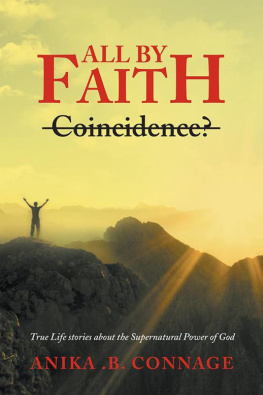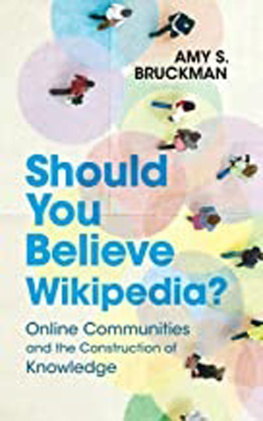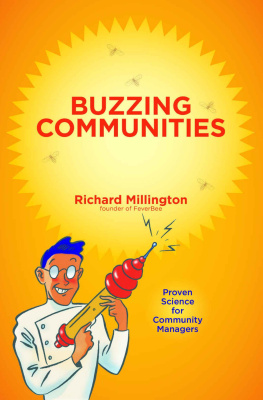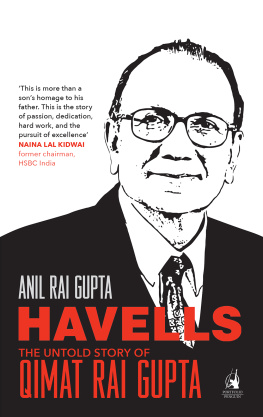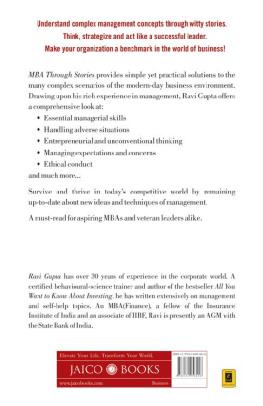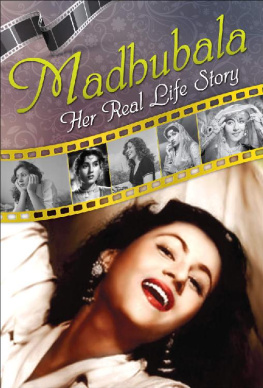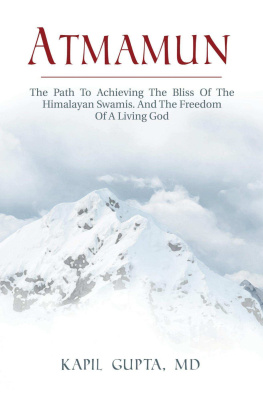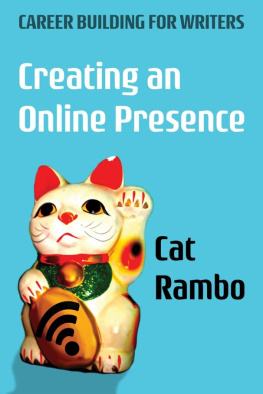Anika Gupta - How to Handle a Crowd: The Art of Creating Healthy and Dynamic Online Communities
Here you can read online Anika Gupta - How to Handle a Crowd: The Art of Creating Healthy and Dynamic Online Communities full text of the book (entire story) in english for free. Download pdf and epub, get meaning, cover and reviews about this ebook. year: 2020, publisher: Tiller Press, genre: Politics. Description of the work, (preface) as well as reviews are available. Best literature library LitArk.com created for fans of good reading and offers a wide selection of genres:
Romance novel
Science fiction
Adventure
Detective
Science
History
Home and family
Prose
Art
Politics
Computer
Non-fiction
Religion
Business
Children
Humor
Choose a favorite category and find really read worthwhile books. Enjoy immersion in the world of imagination, feel the emotions of the characters or learn something new for yourself, make an fascinating discovery.

- Book:How to Handle a Crowd: The Art of Creating Healthy and Dynamic Online Communities
- Author:
- Publisher:Tiller Press
- Genre:
- Year:2020
- Rating:5 / 5
- Favourites:Add to favourites
- Your mark:
- 100
- 1
- 2
- 3
- 4
- 5
How to Handle a Crowd: The Art of Creating Healthy and Dynamic Online Communities: summary, description and annotation
We offer to read an annotation, description, summary or preface (depends on what the author of the book "How to Handle a Crowd: The Art of Creating Healthy and Dynamic Online Communities" wrote himself). If you haven't found the necessary information about the book — write in the comments, we will try to find it.
Anika Gupta: author's other books
Who wrote How to Handle a Crowd: The Art of Creating Healthy and Dynamic Online Communities? Find out the surname, the name of the author of the book and a list of all author's works by series.
How to Handle a Crowd: The Art of Creating Healthy and Dynamic Online Communities — read online for free the complete book (whole text) full work
Below is the text of the book, divided by pages. System saving the place of the last page read, allows you to conveniently read the book "How to Handle a Crowd: The Art of Creating Healthy and Dynamic Online Communities" online for free, without having to search again every time where you left off. Put a bookmark, and you can go to the page where you finished reading at any time.
Font size:
Interval:
Bookmark:
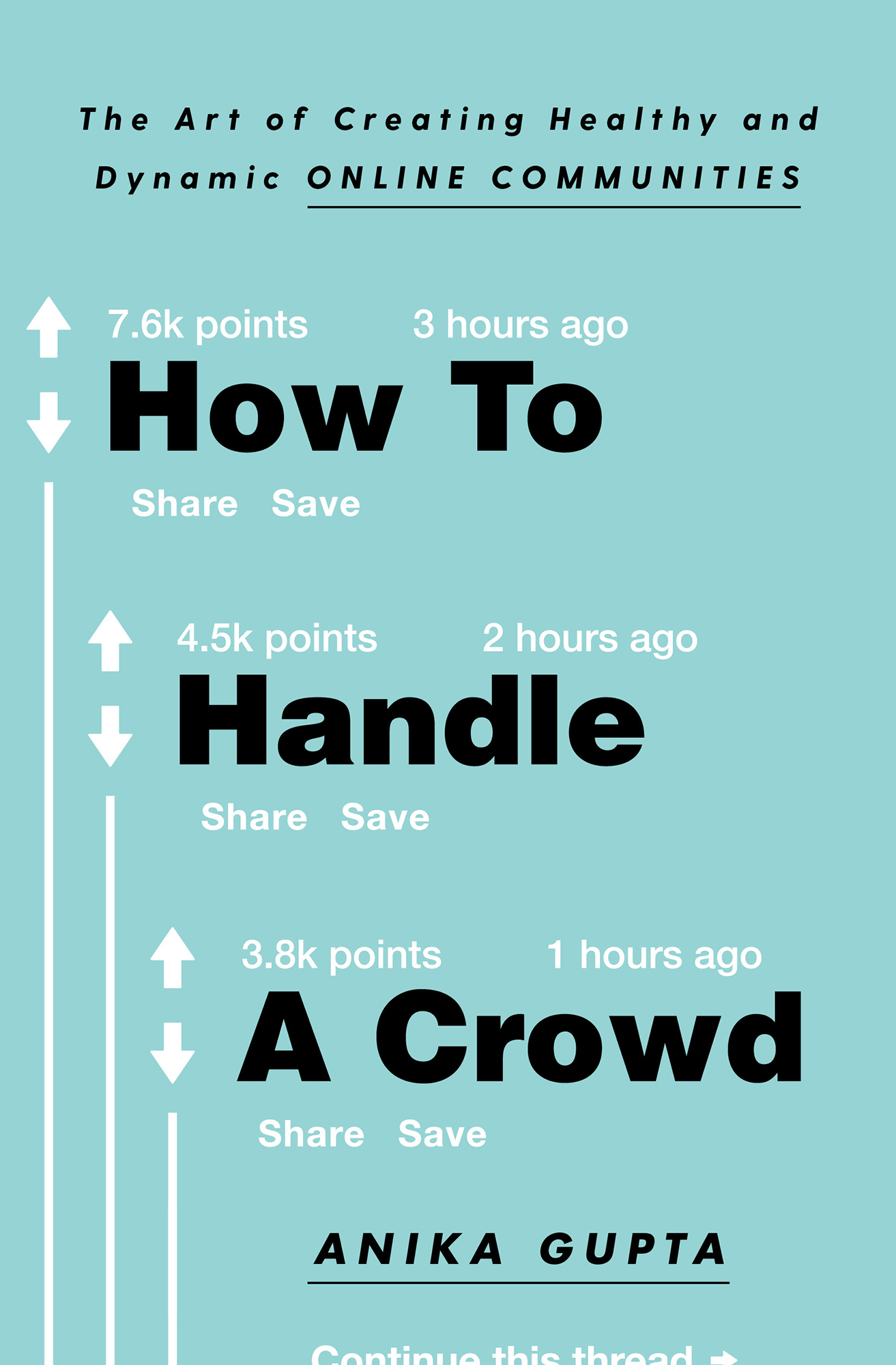


An Imprint of Simon & Schuster, Inc.
1230 Avenue of the Americas
New York, NY 10020
www.SimonandSchuster.com
Copyright 2020 by Anika Gupta
All rights reserved, including the right to reproduce this book or portions thereof in any form whatsoever. For information, address Simon & Schuster Subsidiary Rights Department, 1230 Avenue of the Americas, New York, NY 10020.
First Tiller Press trade paperback edition August 2020
TILLER PRESS and colophon are trademarks of Simon & Schuster, Inc.
For information about special discounts for bulk purchases, please contact Simon & Schuster Special Sales at 1-866-506-1949 or .
The Simon & Schuster Speakers Bureau can bring authors to your live event. For more information or to book an event, contact the Simon & Schuster Speakers Bureau at 1-866-248-3049 or visit our website at www.simonspeakers.com.
Interior design by Laura Levatino
Cover design by Patrick Sullivan
Author photography by Andrew Phelps
Library of Congress Cataloging-in-Publication Data has been applied for.
ISBN 978-1-9821-3231-6
ISBN 978-1-9821-3232-3 (ebook)
For my family
S ome of our earliest communities were bounded and defined by geography. In 2005, when the academic researchers Jenny Preece and Diane Maloney-Krichmar wrote an essay about online communities for the Journal of Computer-Mediated Communication, they began by saying, Until the advent of telecommunications technology, definitions of community focused on close-knit groups in a single location. Factors such as birth and physical location determined belonging to a community. But then communications networks expanded. As the internet and then social media came into existence, the boundaries of the modern community expanded beyond what people in those early communities might have imagined. We began to spend time in online groups. These groups werent defined only by geography, religion, or birth; they included an expanding array of ever-more-niche interests. In researching this book, I came across online groups dedicated to all of the following: a specific cooking implement; a particular and now-discontinued science fiction show; home-brewed cosmetics; and the word yikes. Joining an online community today is an act of self-definition, even when its something as simple as clicking the Join button on a Facebook page or the Subscribe button on a YouTube profile.
As with geographic communities, even a simple online community can require enormous work to sustain. Who defines the boundaries and identities of the community? Who makes and enforces rules? In the geographic community, there were authoritieselders, leaders, officials. Online, those roles are performed by many different individuals and agencies: participants, software companies, governments. In their essay, Preece and Maloney-Krichmar eventually settle on the following definition for an online community: the people who come together for a particular purpose, and who are guided by policies (including norms and rules) and supported by software.
People, purpose, policies, software. Powerful technology companies like Facebook and Google build the software, then draft terms and conditions that specify how people can use their tools. They have enormous power to decide who connects with whom, and how. Governments also play a rolethey specify legal consequences for certain types of online behavior. They can ban pornography, gambling, and prostitution on the internet, for example, and companies and individuals will have to comply.
But technology alone isnt enough. In a study of online groups, the researchers Brian Butler, Lee Sproull, Sara Kiesler, and Robert Kraut explain the social behavior required:
First, people must tend the tools themselves by managing software versions, keeping address files up to date, and so on. People also must recruit members to replace those who leave. They must manage social dynamics. They must participate. Without these group maintenance activities, even sophisticated tools and infrastructure will not sustain viable online groups.
The people in a group create purpose and policies among themselves. They work with software, but also around and through it. For example, Twitter provides a platform where people can send short messages out into the world. In theory, these messages can be only 280 characters long, but people build linked tweets into chains or threads. There are whole online conventions around how to label a Twitter thread so that it becomes a sequential argument. The author Jennifer Egan wrote an entire short story in tweets, subverting the mediums brevity. People do fascinating things to get around and through the restrictions and limitations of the software they use, sometimes transforming its original or intended purpose in order to better suit a social need.
Participants also craft policies. Many online communities these days have additional policies beyond the terms and conditions required by the platform. These policies appear in a variety of places: in sidebars on forums, in questions that people have to answer before they join the community, in introductory or pinned posts at the top of a message board. In addition to written rules, communities often have unwritten rules and codes of behavior, developed among members over time. These norms are powerful, toothey can influence who feels welcome in the community, how members post, and how other people respond. Where do these policies come from? How are they enforced? It turns out that this work doesnt fall on everyone equally. There are some people who do more of the work in online communities than others. Theyre called moderators.
Moderator is a new-ish job title. According to more traditional definitions, its barely a job title at all. Many moderators work for free, volunteering many hours every week to update their communitys technology, manage relationships, and recruit and train other moderators. The skills the job requires are as old as human conversation and overlap with those needed for customer service, digital media, marketing, conflict mediation, and event management. Moderating draws on the tradition of the bard or the storyteller, as well as the host.
Of course, moderation work isnt limited to volunteers. As more and more people join and share ideas in social networks, organizations, governments, and brands operate in these spaces also. Paid customer-service specialists and community liaisons often do moderation work. So do audience development editors and some journalists. Many influencers either manage their own communities or recruit other people to do it.
How to Handle a Crowd deals mainly with volunteer moderators (although there are two exceptions: someone who started out as a volunteer moderator and then was hired for the role, and a YouTube influencer who went full-time). These moderators have certain responsibilities in common: they add or remove users, write rules and guidelines, message people one-on-one to talk about rules violations, approve posts, and intervene in online arguments.
Through careful and constant work, moderators also shape their communities in the long term, and this is perhaps the most important function they perform. When they draft rules and admit or remove people, moderators shape not only the communitys structure but also its fundamental identity. In this task, they sometimes receive support from the companies whose software they use; social media companies realize that they depend on moderators to keep communities healthy and to keep users coming back. Representatives at platforms like Facebook, YouTube, and Reddit regularly reach out to moderators of large groups. They offer them invitations to moderator-only groups and events, offer them the chance to give early feedback on new features, and give them priority access to tech support. Platforms also offer moderators access to information that other members of the community might not have, in order to help them moderate better: historical records of individual users behavior, special communication channels for moderators only, and graphs or charts of things like comments and interactions over time.
Font size:
Interval:
Bookmark:
Similar books «How to Handle a Crowd: The Art of Creating Healthy and Dynamic Online Communities»
Look at similar books to How to Handle a Crowd: The Art of Creating Healthy and Dynamic Online Communities. We have selected literature similar in name and meaning in the hope of providing readers with more options to find new, interesting, not yet read works.
Discussion, reviews of the book How to Handle a Crowd: The Art of Creating Healthy and Dynamic Online Communities and just readers' own opinions. Leave your comments, write what you think about the work, its meaning or the main characters. Specify what exactly you liked and what you didn't like, and why you think so.

